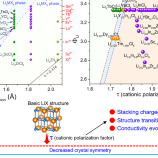
Articles
-
Jun 17, 2024 |
nature.com | Wei Li |Xiaolin Zhang |Jing Li |Xiao Yang |Dong Li |Yantong Liu
Artificial intelligence (AI) holds immense promise for K-12 education, yet understanding the factors influencing students’ engagement with AI courses remains a challenge. This study addresses this gap by extending the technology acceptance model (TAM) to incorporate cognitive factors such as AI intrinsic motivation (AIIM), AI readiness (AIRD), AI confidence (AICF), and AI anxiety (AIAX), alongside human–computer interaction (HCI) elements like user interface (UI), content (C), and learner-interface interactivity (LINT) in the context of using generative AI (GenAI) tools. By including these factors, an expanded model is presented to capture the complexity of student engagement with AI education. To validate the model, 210 Chinese students spanning grades K7 to K9 participated in a 1 month artificial intelligence course. Survey data and structural equation modeling reveal significant relationships between cognitive and HCI factors and perceived usefulness (PU) and ease of use (PEOU). Specifically, AIIM, AIRD, AICF, UI, C, and LINT positively influence PU and PEOU, while AIAX negatively affects both. Furthermore, PU and PEOU significantly predict students’ attitudes toward AI curriculum learning. These findings underscore the importance of considering cognitive and HCI factors in the design and implementation of AI education initiatives. By providing a theoretical foundation and practical insights, this study informs curriculum development and aids educational institutions and businesses in evaluating and optimizing AI4K12 curriculum design and implementation strategies.
-
May 24, 2024 |
nature.com | Yican Xiong |Chaochao Tan |Youde Cao |Zhonghua Deng |Wanying Xie |Cunyan Li | +2 more
Fine particulate matter (PM2.5) is one of the four major causes of mortality globally. The objective of this study was to investigate the mechanism underlying liver injury following exposure to PM2.5 and the involvement of circRNA in its regulation. A PM2.5 respiratory tract exposure model was established in SPF SD male rats with a dose of 20 mg/kg, and liver tissue of rats in control group and PM2.5-exposed groups rats were detected. The results of ICP-MS showed that Mn, Cu and Ni were enriched in the liver. HE staining showed significant pathological changes in liver tissues of PM2.5-exposed group, transmission electron microscopy showed significant changes in mitochondrial structure of liver cells, and further mitochondrial function detection showed that the PM2.5 exposure resulted in an increase in cell reactive oxygen species content and a decrease in mitochondrial transmembrane potential, while the expression of SOD1 and HO-1 antioxidant oxidase genes was upregulated. Through high-throughput sequencing of circRNAs, we observed a significant down-regulation of 10 and an up-regulation of 17 circRNAs in the PM2.5-exposed groups. The functional enrichment and pathway analyses indicated that the differentially expressed circRNAs by PM2.5 exposure were primarily associated with processes related to protein ubiquitination, zinc ion binding, peroxisome function, and mitochondrial regulation. These findings suggest that the mechanism underlying liver injury induced by PM2.5-exposure may be associated with mitochondrial impairment resulting from the presence of heavy metal constituents. Therefore, this study provides a novel theoretical foundation for investigating the molecular mechanisms underlying liver injury induced by PM2.5 exposure.
Try JournoFinder For Free
Search and contact over 1M+ journalist profiles, browse 100M+ articles, and unlock powerful PR tools.
Start Your 7-Day Free Trial →